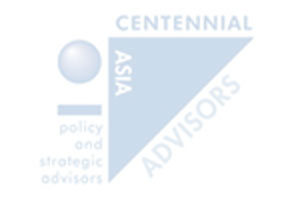- March 18, 2020
- Posted by: admin
- Category: Daily News
No Comments

- A total of 1.62 million rai of agricultural land was damaged by drought between Sep 19 and Feb 20, according to the Agricultural Disaster Monitoring and Resolution Centre at the Agriculture and Cooperatives Ministry. Of the total, 89% of the land was dedicated to rice production, with the rest for field crops and horticulture. Water stored in dams in all regions is below the five-year average and even lower than in 2014 – when the most severe drought in 10 years occurred.
- The region most seriously affected has been the central region. The Meteorological Department has forecast the drought could persist until Jun 20. Siam Commercial Bank’s Economic Intelligence Center (EIC) has evaluated the magnitude of the drought’s impact on Thailand’s key agricultural outputs: rice, sugar cane, cassava, rubber and oil palm. Growers of these five strategic crops account for 97% of all farm households in the country.
- A preliminary assessment shows that drought will seriously most affect production of off-season rice, sugar cane and cassava, which are primarily planted in the northern, northeastern and central regions.
- Off-season rice has been planted since late 2019, whereas sugar cane and cassava can be planted all year round. The output of such crops will be high and concentrated between Jan – Jun 20.
- Sugar cane production is considered to be highly impacted by drought. EIC estimates that in a worst-case scenario, cane supply could drop by as much as 27%, reducing supply available for crushing. In such a scenario, total cane supply will fall 43% in the 2019-20 crushing season (as compared to the 2018-19 crushing season). Reduced supply will cause mills to end the crushing season in Mar 20, compared to Apr in most years. If the dry season lasts until Jun 20, mills may also face cane shortages during the next crushing season.
- Output of off-season rice during 1H20 will be hit by critical water shortages in the central region. EIC estimates in a worst-case scenario, off-season rice output could drop by 21%. Off-season rice accounts for about 20% of Thailand’s total rice output.
- EIC analysis based on data from the Office of Agricultural Economics shows that rubber prices would stay broadly constant in 2020 from 2019 levels. Prices of white rice would increase 2%, oil palm 38%, cassava 16% and sugar cane 14%.
- Similarly, drought has damaged cassava output. Even though 57% of total cassava production comes from the worst-affected northeastern region, the crop itself is drought-tolerant. EIC estimates in a worst-case scenario, cassava production in 2020 could drop 7%.
- Oil palm and rubber output should not be affected by drought as most of the crops are planted in the southern region. High oil palm and rubber supply is forecast as a result.
- Income insurance programmes in 2019 for rice, cassava, rubber and oil palm increased farmers’ incomes by about 1-2% from what they would have been without the programme, which is expected to provide similar support in 2020.
- For short-term mitigation, EIC says the government could encourage farmers to modify agricultural practices according to changing water conditions. In the longer term, sustainable water management is needed to resolve structural problems.
- In the past, most drought mitigation measures were focused on encouraging farmers to reduce cultivation of water-intensive crops such as off-season rice, or providing compensation for drought-affected farmers. However, in the short term, the government could take additional measures, such as knowledge transfer on cultivation, farming inputs and technology to encourage farmers to modify practices in light of reduced water availability.
- The government should also urge farmers to bring more agricultural output into the crop insurance programme to help support their incomes.
- The government could also urge farmers to plan crop cultivation appropriately, for example, grow crops that require less water in areas that repeatedly suffer from drought, promote crops with high value-added and support farmers to shift to cultivate crops as planned.
External Link : https://www.bangkokpost.com/business/1881185/assessing-drought-impact
18-Mar-2020
